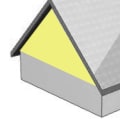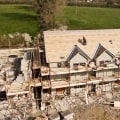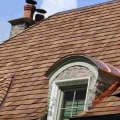A typical homeowner's insurance policy against all hazards covers your roof and the cost of replacing it if it becomes damaged. That's the good news, How Roof Coverage Works · Preventing Roof Problems A typical homeowner's insurance policy against all hazards covers your roof and the cost of replacing it if it becomes damaged. But it's usually only covered if the damage or destruction is the result of a sudden accident or an act of nature. Problems that result from general wear and tear or a roof that has exceeded its intended life are not eligible for reimbursement because they fall under the homeowner's general maintenance responsibility.
If the roof is damaged by a covered hazard, such as fire or bad weather, homeowners insurance will cover the costs of replacing the roof. At this point, you're knee-deep in the claims process. One thing you want to check is the age of your roof. Even if your claim is supported, the age of the ceiling will affect the amount of checks you receive from the insurance company.
Every policy is different, so it's just a generalized rule. That said, roofs less than 10 years old are usually fully covered. As they age more than a decade, they will depreciate, and the amount the insurance company will help you pay for the repair or replacement will reflect that depreciation. Even in the face of depreciation, any check is better than no check, so keep it firm until the end.
If your policy is for RCV, your insurance company will pay the value of the cost of replacing your roof at the time of the covered loss. But buying a new roof to replace an old one is most likely not covered by homeowners insurance. Having an old, worn roof can make it more difficult for homeowners insurance to cover damage to the roof. But as long as the damage is caused by extreme weather conditions, your homeowners insurance must cover your roof and pay to replace it.
Read on to learn more about when homeowners insurance might help with roof repair or replacement costs. The scratch may be visible from the patio, but it does not affect the operation of the roof; the structure was not damaged and the roof keeps the water out as it should. If your roof needs to be replaced due to unexpected acts of nature or severe weather conditions other than flooding, you are likely to be covered. An earthquake could also cause the roof structure to peel off, shingles to fall, or even cause a tree to fall on the roof and damage it.
If the roof was damaged as a result of any of these covered hazards, the roof is most likely covered under the homeowners insurance policy. Damage and destruction from such events qualify the owner for a full or partial replacement of the roof. Since insurance companies generally don't cover claims resulting from preventable damage, insurance adjusters will closely analyze the condition and material of the roof should you need to file a roof claim. The adjuster will go to the roof, assess the damage, determine what is covered and what is not for your roof claim, and give you a quote to provide to the roofing contractor.
It will depend on the insurance company, but if you correctly used your claim payment to repair or replace your roof and you have some money left over afterwards, your insurance company may allow you to keep the excess money. Many roofing companies inspect a roof for free in the hope of winning business in the future (but don't be surprised if they encounter a lot of problems).






